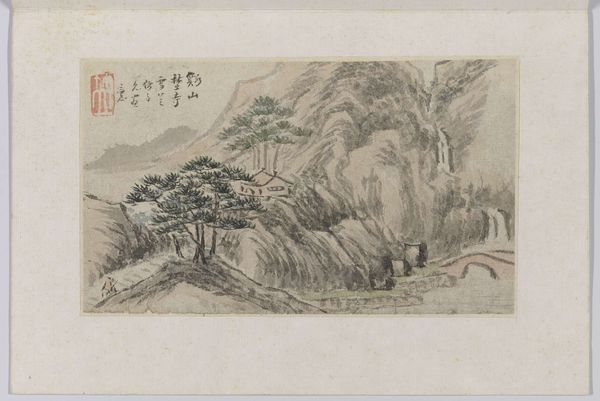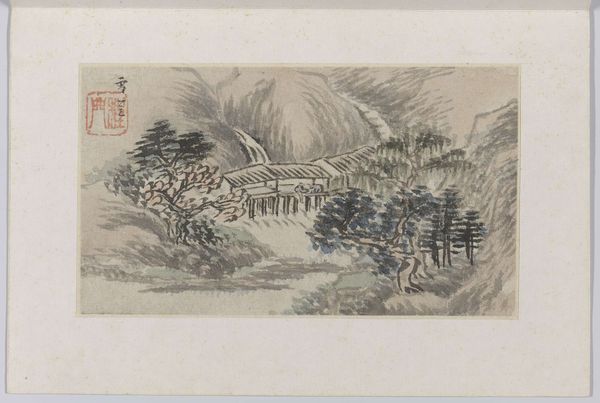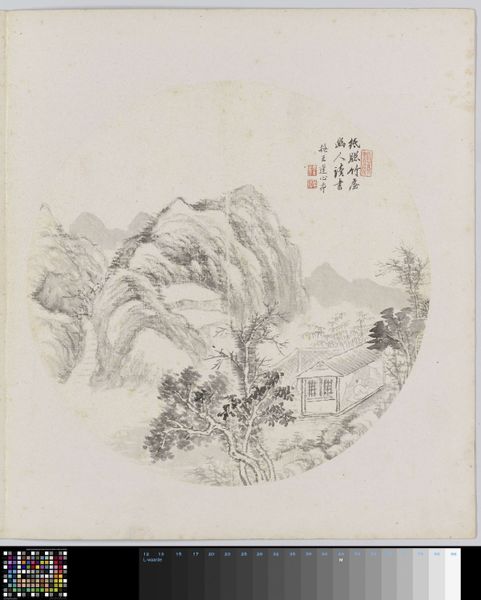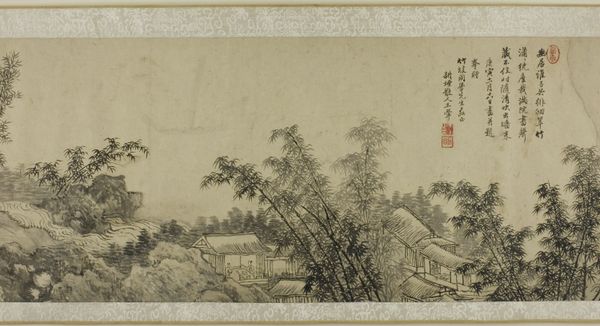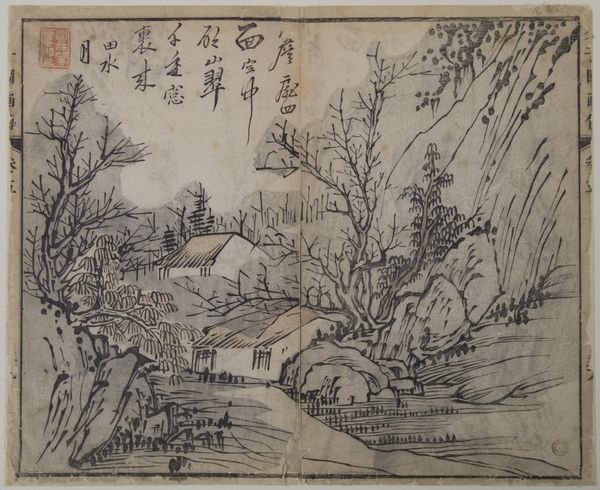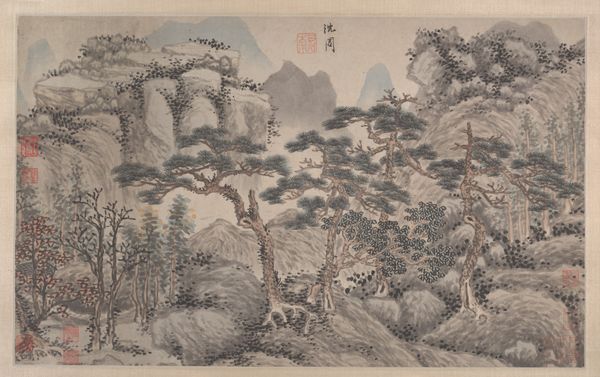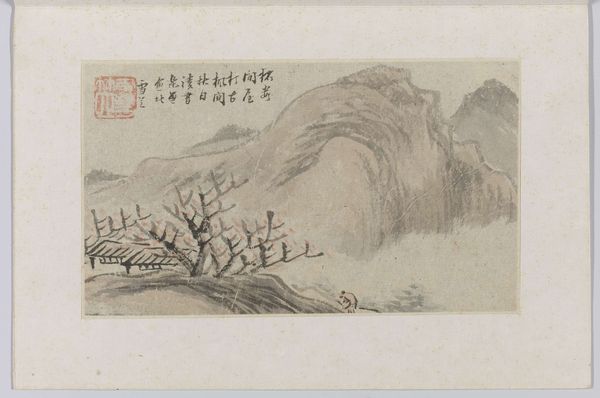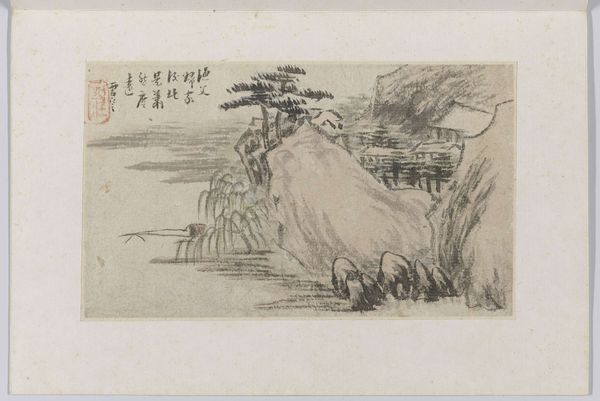
watercolor, ink
#
asian-art
#
landscape
#
figuration
#
watercolor
#
ink
#
orientalism
#
calligraphy
Dimensions: height 24 cm, width 20 cm
Copyright: Rijks Museum: Open Domain
Editor: This is “Landschap,” a landscape painted with ink and watercolor, dating from between 1850 and 1900 by Cheng Men. It evokes a sense of serene contemplation for me. What do you see in this piece? Curator: What I see is a conversation happening across time and cultures. It appears to be Chinese painting rendered through the lens of orientalism. There's a kind of cultural appropriation happening here, but also a dialogue. Who is this painting for, and what does it say about the relationship between East and West during that period? Do you notice how the style leans into Western expectations of "Asian art", possibly reinforcing stereotypes? Editor: I didn’t think about it that way. So, the artist is kind of playing with expectations, maybe even subverting them? Curator: Possibly. The calligraphy suggests a connection to traditional literati painting, where art and poetry were deeply intertwined. The choice of landscape, mountains, and water especially, usually represents escape and reflection in the face of social or political turmoil. Who has access to that escape, and at whose expense? How does orientalism repackage and resell this feeling of escape? Editor: That's a great point! The tranquil imagery seems loaded now. What is its intended meaning? Was it supposed to be a social commentary? Curator: It might be too much to assert a direct social critique from the artwork alone. However, viewing this painting critically, recognizing the artistic and cultural power dynamics involved can make us think more deeply about orientalism in art. We also have to acknowledge we're interpreting it with a present-day sensibility, decades later. Editor: Absolutely. Thinking about its reception historically alongside its impact today changes everything. Thanks, I'm glad to consider art’s power critically like this. Curator: Indeed. This reminds us of the importance of examining the contexts surrounding artwork and opens our mind to reflect on the role of power, representation and history within the orientalist depiction.
Comments
No comments
Be the first to comment and join the conversation on the ultimate creative platform.
